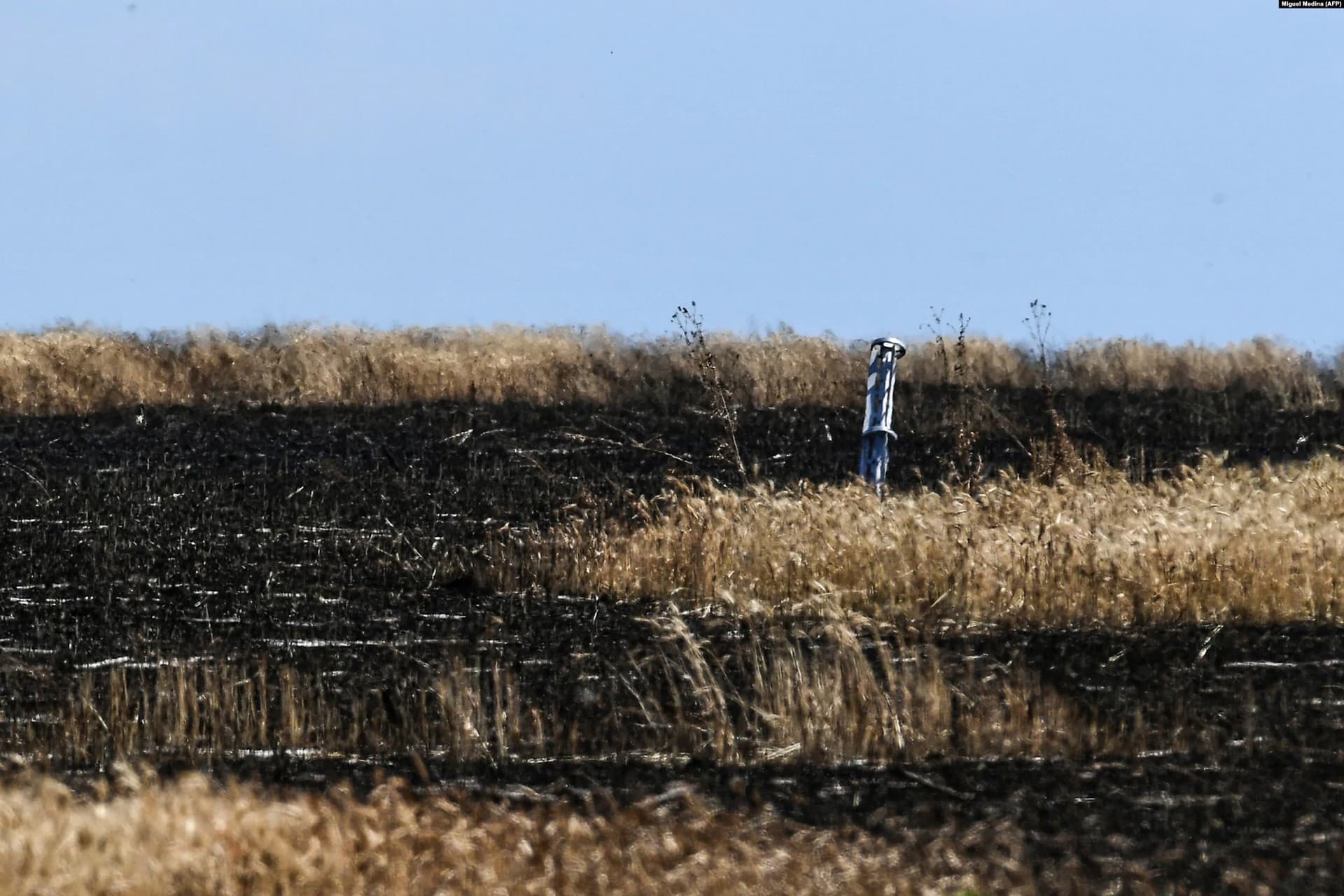18 July 2022
A summer heatwave and the possible deliberate targeting of Ukraine's farmland have added a frightening new element to the Russian invasion as swathes of wheat are destroyed by fire.

A Ukrainian fighter walks past a burning wheat field in eastern Ukraine near the front lines of the Russian advance on July 17.
— Photo by Dmytro Smolienko / Reuters

A line of fire blazes through a wheat field in the Mykolayiv region on July 17. Such fires have become increasingly common as the summer sun bakes Ukraine’s wheat-growing plains dry.
— Photo by Ukraine Emergency Service / AFP

An aerial photo taken on July 8 shows the widespread destruction of a wheat field near Siversk in the Donetsk region. Fires in dry wheat fields can easily be sparked by explosions or the red-hot fragments of artillery shrapnel.
— Photo by Miguel Medina / AFP

Russian forces have also been accused of deliberately targeting food infrastructure in Ukraine. RFE/RL journalists witnessed this storage facility for sunflower seeds burning on May 31. Ukrainian soldiers claimed the warehouse had been singled out for an artillery strike.
— Photo by Serhii Nuzhnenko / Reuters

A firefighter battles a blaze in the Kherson region on July 18. The widespread destruction of Ukraine’s wheat fields has added new urgency to a food crisis caused by the war.
— Photo by Ukraine Emergency Service / AFP

The internal section of a rocket embedded in a singed wheat field at an undisclosed location in Ukraine. Due to a Russian naval blockade, Ukraine’s Black Sea ports are currently idle, strangling supply routes to other countries including several African nations that depend on Ukrainian wheat.
— Photo by Miguel Medina / AFP

Charred Ukrainian wheat photographed on July 17 on the border between the Zaporizhzhya and Donetsk regions, where fighting is currently under way. Turkish-led talks are ongoing to establish safe passage for ships leaving Ukrainian ports. According to a readout from recent calls between Turkish President Recep Tayyip Erdogan and his Ukrainian and Russian counterparts, Erdogan stressed that “it was time for the United Nations to take action for the plan regarding the formation of secure corridors via the Black Sea for grain export.”
— Photo by Dmytro Smolienko / Reuters

A Ukrainian farmer in the Dnipropetrovsk region watches as patches of his wheat fields burn as a result of fighting on July 4. Vladimir Putin is due to meet with the Turkish leader in Iran starting on July 19, a meeting that is intended in part to iron out remaining disagreements over a potential export corridor through the Black Sea.
— Photo by Efrem Lukatsky / AP

Ukrainian wheat burning in eastern Ukraine on July 17. The EU is reportedly considering walking back some aspects of sanctions against Russia that may have limited food exports from the country, adding to the global squeeze on supplies and prices.
— Photo by Dmytro Smolienko / Reuters
